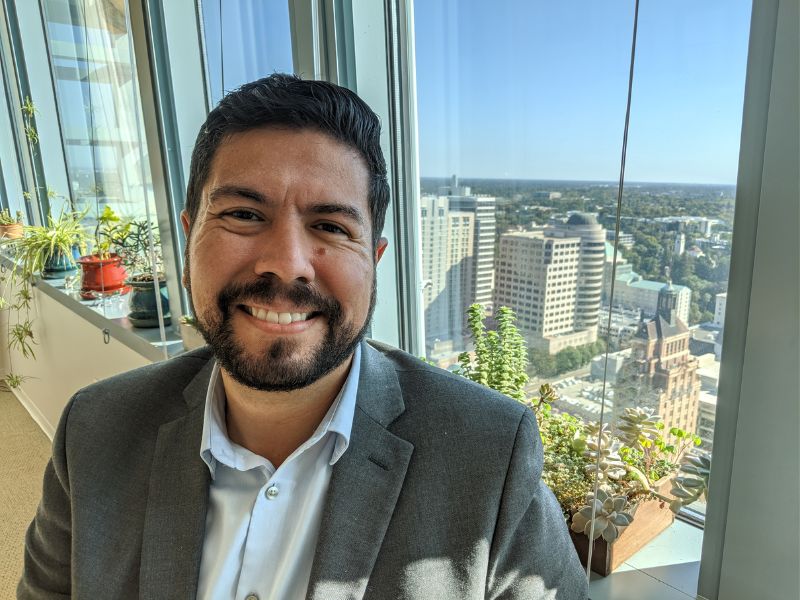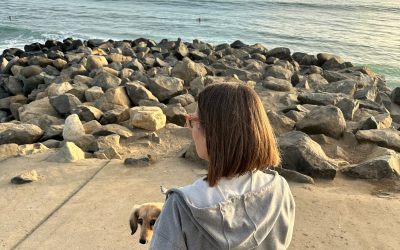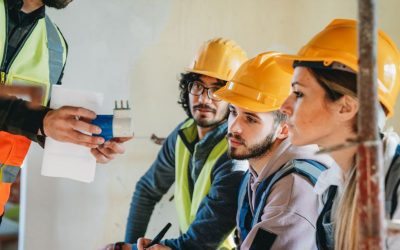Since joining the State Water Resources Control Board in 2017, E. Joaquin Esquivel has brought an inclusive, fresh and digital-savvy outlook to the regulatory board that can trace its roots back nearly 175 years in California history. Recently reappointed for a second term as chair, he has earned a reputation as an approachable and authentic servant leader who prioritizes collaboration with dignity for all. Here, Esquivel talks about the Board’s priorities, California’s legacy of water development and his outlook for the next two years.
SOURCE: The State Water Resources Control Board was created in the 1960s and was given the authority and responsibility to protect water quality, balance competing demands on our water resources and attempt to resolve decades-long water disputes. But in some ways, the Board traces its roots back to the state’s water battles beginning during the 1849 Gold Rush. How has that legacy of balancing competing demands on California’s water resources evolved and what do you see as the Board’s mission today?
ESQUIVEL: We certainly know a lot more today about our watersheds, their ecologies and the economies we have built upon them than we did during the reckless abandon of the Gold Rush. The challenge before us is how to turn that knowledge and hindsight into better decisions for today and future generations.
When it comes to the roots of our enduring water battles, although the Gold Rush was a turning point, I would go back in time even further to the thousands of years — time immemorial — that roughly 300,000 Native People lived and thrived in what we now know as the state of California.
It’s a point of particular pride that Governor Gavin Newsom made it a priority, early in his term, to issue an apology through a state executive order to California Native American Peoples for the many instances of violence, mistreatment and neglect that the state had inflicted throughout history. While this start is long overdue, it is hard to fully appreciate what it means to reconcile that past, that history, with other fundamental mistakes on our path to the present.
Recently, the word I find myself reflecting on most often is ‘reconciliation.’ We have collectively inherited an incredible legacy of water systems and resources, which have allowed California to become one of the world’s wealthiest economies while supporting nearly 40 million residents. Yet, we are still making amends with our collective past, including having spent the last century building water projects and economies for a climate and hydrology that no longer exists.
If we have any hope of moving onto the challenges before us without perpetuating, or worse, repeating past injustices, we must reconcile our inherited water systems. This theme of reconciliation and its accompanying themes of penance and absolution pervade the more legal and regulatory language of the programs and tools at the State Water Board. What makes the task even more challenging is the defensiveness that arises in reconciling systems that most of us had no hand in creating directly, yet find ourselves responsible for remediating.
While the Water Board’s core mission that then-Governor Ronald Reagan signed into law has not changed, our norms, expectations and scientific and technical understanding of water management have certainly evolved in the half-century since the State Water Board’s formation. Incorporating those evolutions, untangling and setting on the right course 19th century water law and aging 20th century infrastructure to respond to a 21st century climate crisis, at its simplest, is our collective task.
SOURCE: Is there one accomplishment or moment so far that stands out in the roughly two years that you’ve been in office?
ESQUIVEL: As I look toward serving a second term, I am glad to say there have been a number of moments that stand out. If I were to land on a single one, it would be Governor Newsom’s 2019 signing of SB200, California’s Safe and Affordable Drinking Water Fund. Because of it, the Water Board is in our second year of implementing the Safe and Affordable Funding for Equity and Resilience (SAFER) program.
Using short- and long-term strategies, SAFER is designed to ensure Californians who lack safe, adequate and affordable drinking water receive it as quickly as possible and that the water systems serving them establish sustainable solutions. In doing so, SAFER minimizes the disproportionate environmental burdens experienced by some communities and advances the fair treatment of people of all incomes, races and cultures.
SOURCE: Creating the SAFER program is a huge step toward addressing contaminated water supplies that affect about one million residents in the state. What is your vision for how that program will work moving forward? What do you hope the program will accomplish?
ESQUIVEL: As we know and continue to see, there are often deep inequities in our society that persist. Lack of access to clean water is one symptom in a complex set of challenges our communities face. Yet, a focus on access to clean drinking water and sanitation can be an empowering passageway and help serve as an entry point to discussions on interrelated challenges, like climate change, vulnerability to droughts, floods and concentrating contaminants. Furthermore, it can lead us to solutions for racial inequity and the redlining of Brown and Black communities and can even inform a just recovery from economic depression.
Reconciling our water systems intersects with other societal reconciliations, and one of the clearest examples is the fight for universal access to clean water and sanitation. This program and work are not shaped by my vision alone or even principally. The opportunity to work alongside a growing number of colleagues, organizations and community members has been an honor these last years. With federal opportunities on the horizon to invest in our nation’s failing infrastructure, the work and discussion come at a critical time. What more fundamental infrastructure can we consider than our water infrastructure?
SOURCE: Any lessons learned from the implementation of the first round of funding last year?
ESQUIVEL: I am proud to say that 40 drinking water systems have been returned to compliance in this first year-plus of implementation. Roughly 92% of the remaining non-compliant systems are actively working toward long-term solutions. Approximately 40% of those systems are determining if it is feasible to regionalize with another water system as a solution.
The first year’s funding was also focused on providing technical assistance to water systems, which will remain an important component, especially in these beginning years as we build a pipeline of projects and drinking water solutions that are ready for construction.
Unlike larger, more affluent systems, many communities unable to meet drinking water standards lack the rate-payer base to meet standards or advance drinking water projects. In fact, more than 90% of violations are from systems with fewer than 500 connections.
The old approach largely waited for failed, or soon-to-fail, water systems to develop treatment projects and then apply for capital construction funding, with no support for operations and maintenance. That model was unjust for communities without the resources to steward a project from inception through construction, or to maintain after it is built. The SAFER program emphasizes creating a pipeline between communities and the resources that then drive long-term water solutions. We are no longer simply waiting for systems to fail and are now expanding to incorporate the needs of at-risk systems that might fail without early intervention into the program.
SOURCE: We’ve heard you are enough of a techie that you’ve coded your own home utilities programs. How do you see open data initiatives and better use of technology positively shifting how the Water Board does its work and accomplishes its goals?
ESQUIVEL: Becoming a 21st century regulatory agency is paramount for the State Water Board to accomplish its mission. The water sector cannot afford to ignore advancements in remote sensing, data systems, analytics and machine learning for managing our water resources. The energy, financial and transportation sectors have incorporated, to great efficiency, many of the basic systems that we lack in the water sector.
Thankfully, that is quickly changing. Organizations like the Environmental Defense Fund, the Nature Conservancy and the California Water Data Consortium are helping to usher in a new era of decision support tools that are innovative, open source and synthesize the best of public and private thought leaders to modernize water management and decision-making. One of the most promising projects in the space is OpenET, and I encourage folks to check it out.
SOURCE: What is the most valuable lesson you learned so far as Water Board chair?
ESQUIVEL: That we must preserve the public’s trust. I think it comes as no surprise to most of us that we are living in a time when trust in our government institutions is lacking. Yet, as the climate crisis requires us to be better organized and become better decision-makers, that lack of trust erodes our capacity to bring consensus and action to our most pressing water challenges.
The last 200 years of human history have wrought incredible changes to the way water flows, is managed and ultimately supports our society. What the next 100 to 200 years will bring and how we will usher our communities into the future, especially as it pertains to managing our water, are critically important considerations. The Water Board and our nine regional boards, like all our government institutions, are here to facilitate, not dictate, that vision. I strongly believe that our Board’s mission must first and foremost be guided by our communities themselves and focused on facilitating public involvement, trust and transparency in our decision making if we are to be successful together.
Written for the Spring 2023 SOURCE Magazine.





0 Comments